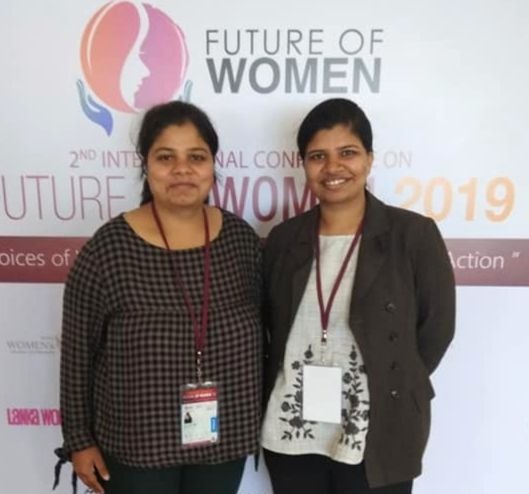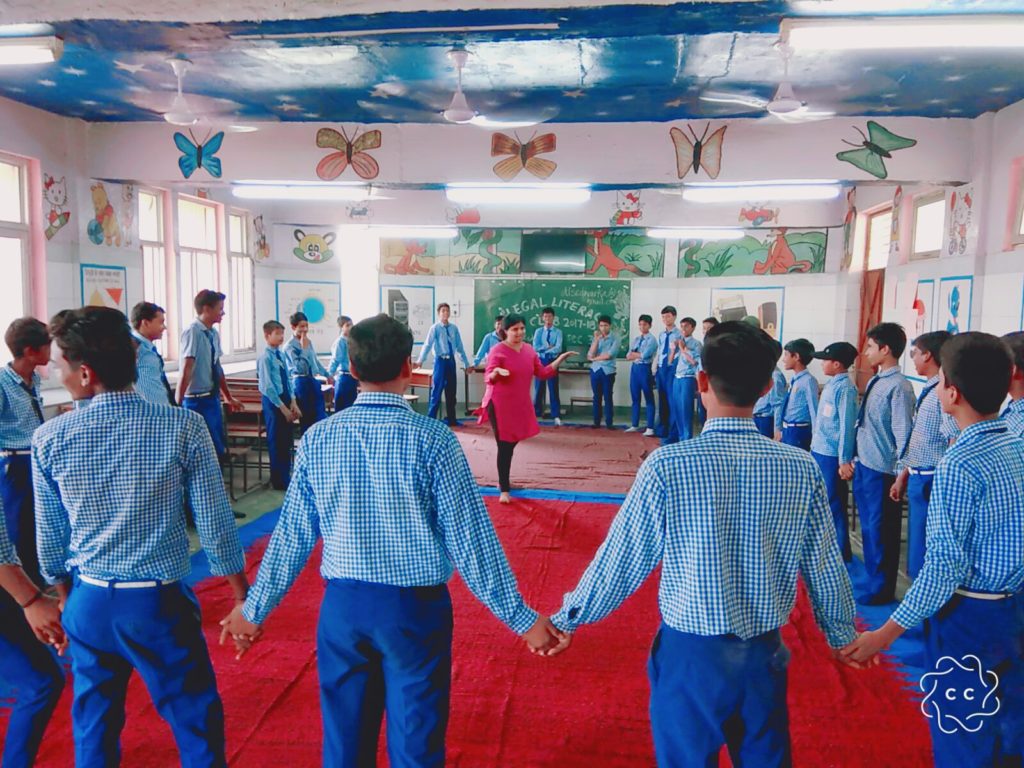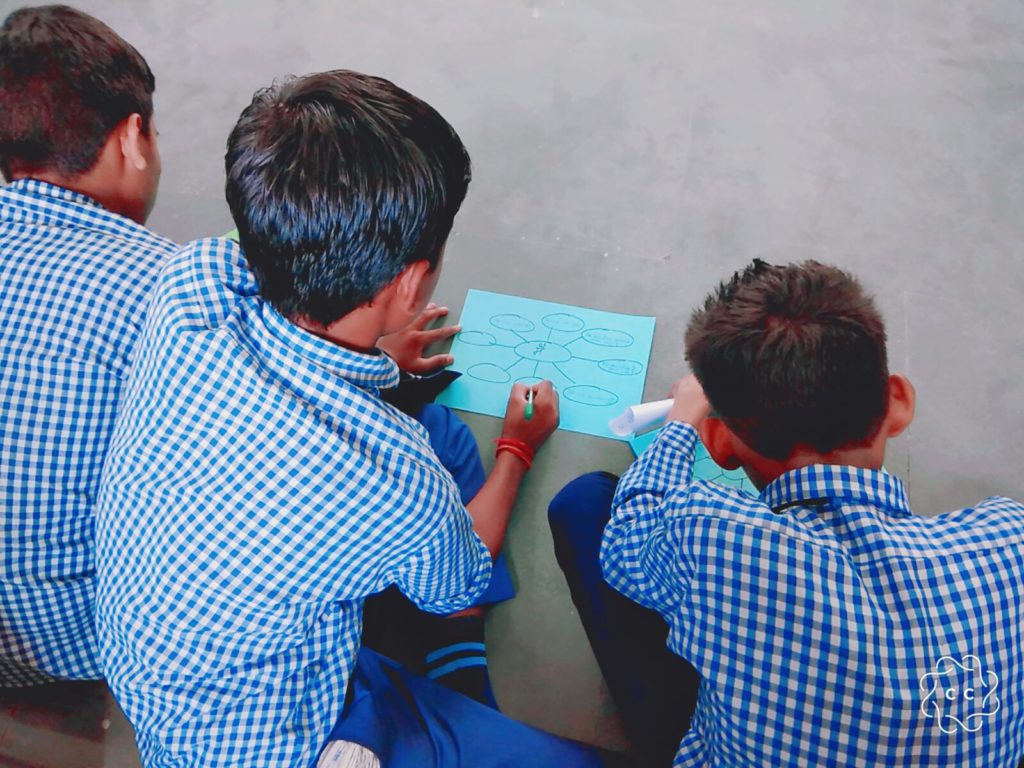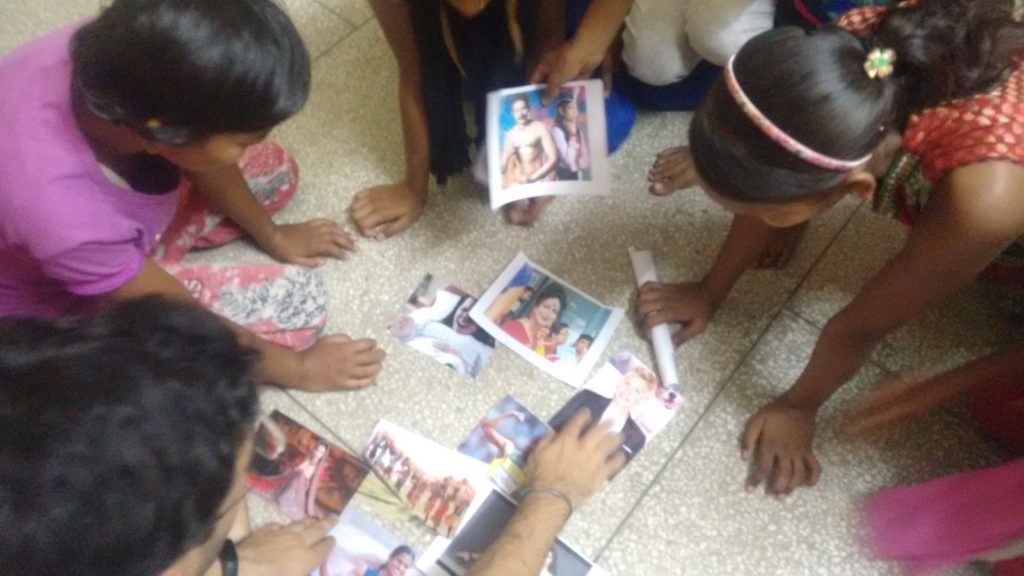The human condition in our country especially in slums is not something we can really feel proud. But, as citizens or as a society its our responsibility to contribute in the best way possible. On these lines, two sisters – Mona & Purvi planned to give ‘Sahas’ (courage) to the most vulnerable population living in the slums of Delhi
–Sahas is your NGO, which is still in its baby years, but the work being done by you both sisters is just incredible. Your focus is on preventive approach towards child sexual abuse. Sexual abuse can lead to long-lasting, even life-long, consequences and is a serious problem on an individual, familial and societal level. Therefore, prevention measures on different levels are needed. What kind of interventions you do towards this particular issue
Mona: When we were working on gender issues with young people, this was something that came out that lot of their experiences of violence, what they shared were of child sexual abuse. And that is a therapeutic approach as it gives space to the person to share the experience but it doesn’t help in preventing the incidences of violence at large. So, we started from there, if child sexual abuse begins at adolescence, why don’t we begin from there and empower adolescents to challenge not just child sexual abuse but build their capacity to challenge any form of gender based violence later in their lives.
Talking about child sexual abuse directly is difficult, it’s a sensitive issue so to talk about this they need to have safe environment. Therefore, first we talk on all the issues like – physical changes, menstruation, body image, peer pressure, gender and then by the last workshop we talk on child sexual abuse so that there is a good rapport and a safe space where they can share experiences.

Purvi: While designing intervention for adolescents, we reflected a lot on our previous gender work, our own experiences, various research studies available on child sexual abuse (very few are available as against the magnitude of the issue) – most of them actually engages in how to provide support once the violence had happened! This can’t solve the issue, also just thinking that something so severe had happened in the childhood, will have adverse effect on personal, social and professional life of the individual – it’s dangerous, painful and excruciating, so in order to solve the issue of CSA, we need to hit the root of it and that’s why we work with adolescents! We also engage with teachers so as to give them language and build their capacity so that they can provide support and be there for adolescents in school – it’s more like building gender sensitive classrooms where they get space to talk about issues and ask for help!

You work in slums of Delhi where changing people’s mindset is just not easy. What efforts you are laying in this direction as a change maker?
Mona – our process of work is very different from many other NGOs. We collaborate with community based organization who is already working there on different issues, it could be education, health and livelihood- the idea is to work together as community for the well-being of the adolescents. For example our first work happened in 2016 in Barola community (Noida) where we collaborated with CBO My Perch which was already working with slum kids for past 3 years. We reached out to founder, spoke about our gender, sexuality and reproductive health curriculum, and because she was observing many things at the community level, about kids studying in government school, seeing unpleasant things in their community and not being able to figure out how to deal with it so clearly there was a need of this intervention as observed by both of us.
Purvi- With Sahas, we are not just empowering adolescents, we are also bringing change in the mindsets and thinking pattern of the people working in the community based organization there by building a gender sensitive community and organization at the same time. For example – in one of the CBOs, while the person got really intimidated during puberty session thinking that too much information was given – the same person stated in the later workshops that participants are now opening up and actually sharing things. Also post menstruation session, she brought hand-made pads, menstrual cups, tampons to show what all products can be used. With this, they understand that gender is not an exclusive issue that needs to be addressed separately but it is something that is integrated in every aspect of their lives and the work they do – so if they work on education – there are gendered realities! That’s actually a victory and so when we complete the intervention, the gender work doesn’t stop there – it is carried forward by the adolescents and the community based organization!

Gender-based violence against children refers to the violence inflicted on a child due to stereotypes and roles attributed to or expected of them according to their sex or gender identity. Children are quite vulnerable as they depend on their parents for everything and Gender dynamics add another layer of vulnerability. How do you see this on the field?
Mona – This is absolutely correct because I remember once when I was volunteering in an organization- they said that the reason we don’t work with children is that they can’t challenge GBV because they are dependent on their parents so at that time I thought its true but when we saw data and everything on CSA, this thing of not having an awareness to say No was very important and it stuck me so I wanted to explore the idea that if they have awareness can they challenge CSA or say No to it! Interestingly we have got many evidences that awareness can actually bring about change. For example – we were working with girls in Dwarka and there was this 11 year old Muslim girl who shared that she saw some boys harassing/stalking a girl in the park. She went to those boys and asked did you ask for consent! The boys casually said yes that she is their friend, but she could clearly see that was not the case so she went to the police constable and asked for help. I think this understanding of consent is very important, nowadays we hear in various court cases, where renowned people accused of sexual violence/harassment, one of the arguments that they say in court hearings– they didn’t hear a ‘NO’ from the victim! So through these workshops, we are giving that information wherein a12 year old is able to understand that its not consent when she is uncomfortable. So, the work actually helps us to understand judgments, stereotypes that exist and going a step ahead by breaking them by helping them understand that no its wrong, when a girl smiles it doesn’t mean she is consenting to what you want.
Purvi- So, what I wish to highlight is that why people equate vulnerability or being dependent to not being capable to making decision. This whole debate of what is right age to engage with adolescents on the issues of gender and sex education, how much information is too much information needs rethinking! By saying that they won’t be able to challenge GBV or they can’t make decisions because they are children, you are already taking away their choice and making decisions for them, which is not required. With vulnerability, comes openness and capacity to learn new things and question the existing norms- and that’s what we at Sahas do! According to me, if kids can understand that they are boy or girl, which religion they belong to, where to go or not, what to watch on tv, fight for what they want in terms of clothes, books etc, they can also understands that gender is a social construct, they being boy or girl doesn’t restrict their capacities or strengths! To give an example – one of the participant from all girls group shared that she helped one of the boys in their community who was older than her to fight against CSA. She was bit scared because she thought that this happens only to the girls, and if it is happening to a boy and that too someone older to him- how can she even talk to him. But she supported him in sharing this with his parents and then the accused was arrested! So this work is like a chain reaction, it is not restricted to us or the adolescents we are engaging with – but it’s actually flowing that makes me surprised and happy at the same time!
What kind of methodologies/approaches is adopted by SAHAS to build capacities of communities, parents and children?
Interactive and activity based workshops on the themes of Gender, Sexuality and Reproductive Health. The crucial aspects are as follows-
- The workshop component is critical and is delivered through interactive activity based learning sessions led by facilitators with expertise in facilitation, gender and sexuality.
- We co-create safe sharing spaces where both girls and boys sit together and engage in activities, discussion around different themes as we believe that all the gender co-exist in the world.
- The facilitation of this curriculum involves using tools such as animation films, mind-mapping, group activities, sharing in pairs and co-creating safe sharing spaces with values of listening, empathy and community building.

Violence is not a private matter and thus violence against children has to be challenged at all levels. Its also important to teach children about equality at a young age and this year’s Women’s Day theme #BalanceForBetter talks all about equality. How do see this in today’s context? Do you think we are still very far away from bringing that equality?
Mona- Anytime, anybody tell me that things have changed, I always think about this 12 year old girl, whom we met during our first workshop on puberty in 2016. She said, that I don’t like growing up because the moment I will get my periods I am not allowed to wear what I want to. So, if a 12-year-old girl residing in the slum community in Delhi says that I can’t wear what I want to wear. Now, how do we say there is empowerment or equality – so equality has to be understood in terms of context? A lot of time it is confused with equity, thinking that if girls are provided with technology there would be equality and if there are more number of women in education and employment we would be equal – this is problematic. There are greater, deeper societal issues; we need to fight against the years of conditioning.
To understand and really bring equality – when we look at our work, especially when we work with Co-ed groups (we insist on doing so because we coexist in society) – for example in the workshop on menstruation, I was quite skeptical because boys won’t be sharing and girls would be speaking but then getting this information is like eureka moment for boys – they understand what girl goes through while being on periods, so they refrain from making fun or looking down upon them – they actually come forward to support each other. Later on when men and women have this idea of not competing with each other, not becoming like each other, supporting each other to grow together as human beings – that’s when equality will happen and through our work we are in exciting space where adolescents are so open, filling them with the right knowledge and help them see a world that’s equal where both men and women; boys and girls can do things they want to.
Purvi- So, thinking about the current scenario and how equality is visualized is pretty utopian. When we say gender issues- or gender equality it is automatically considered as women’s issue but it’s not! It’s about both men and women- men being in power positions with privileges and women being at the end of violence and lacking the accessibility is the core issue! So gender discrimination would disappear when this power dynamics is changed or there is shift in the power position.
On one hand we are talking about promoting girl education but at the same time we also tell her that you do study but also learn household work! You do work but also learn to cater the needs to husband. Be multitasking, look at her she goes to office and also manages her home well- this is not progress or equality- it is overburdening, creating pressure and health issues resulting in women leaving their jobs! Why don’t we see more of women in higher positions though girls pass with more numbers than boys? Why there is this huge gap? We have 60-65% of our population residing in the villages – when we talk about women issues, we talk about campaigns, the women in the villages are casually left behind, they don’t have access to the bare necessities of life forget about social media and phones.
Equality will become a reality when the conversations around gender, sexuality, body, who we are, what do we want? etc. are normalized in homes and schools; seeing oneself and others through the same lens irrespective of gender and sexual identities is what that would lead to equality. With Sahas, adolescents are getting that space where they get to share their stories, learn by experience and ask questions which normally doesn’t happen in our education system. This gives them the opportunity to challenge the status quo that gender has built by infringing the roots of our existence – equality may be a distant aspiration or dream but with these adolescents I see change happening!

